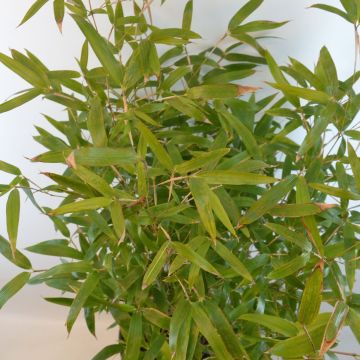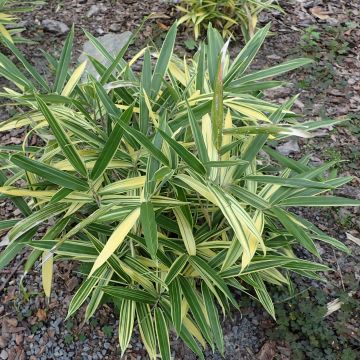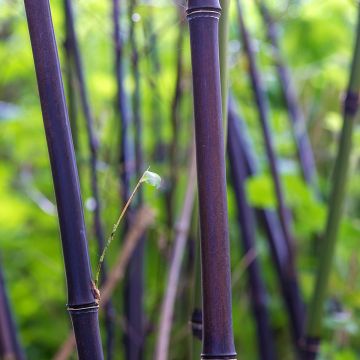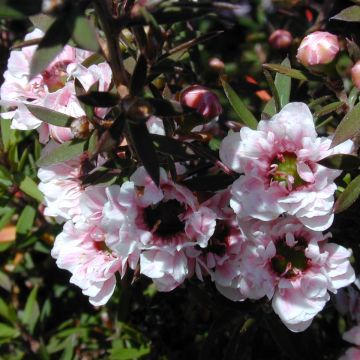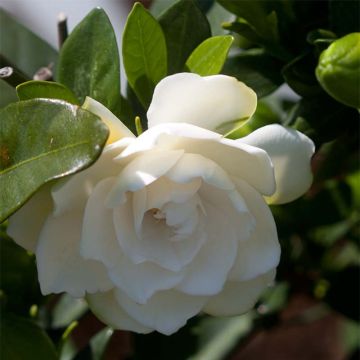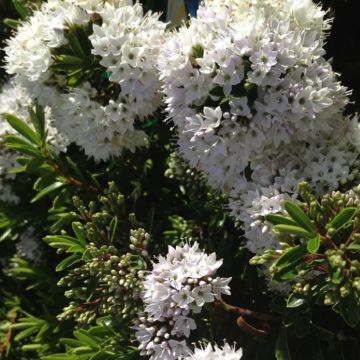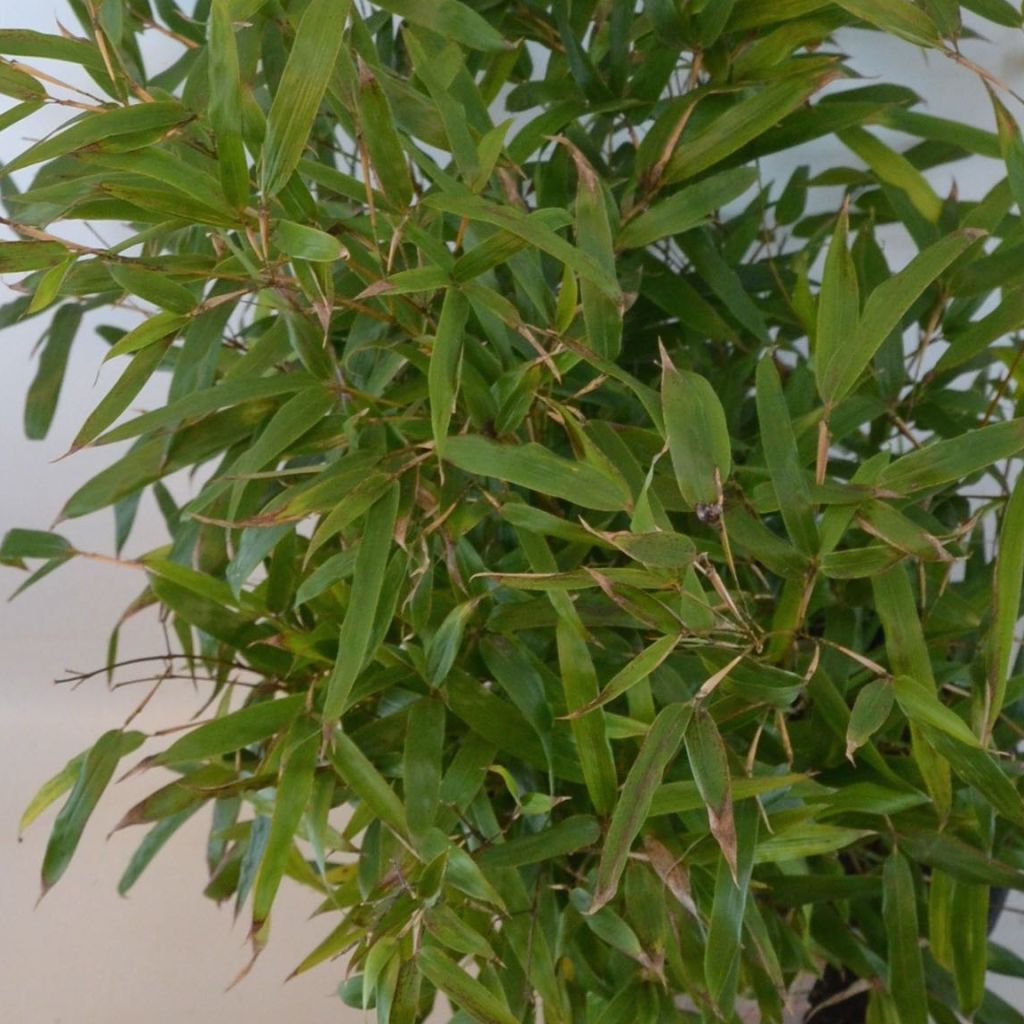

Phyllostachys humilis - Bamboo
Phyllostachys humilis - Bamboo
Phyllostachys humilis
This item cannot be shipped to the selected country
Delivery charge from €6.90
Oversize package delivery charge from €6.90
More information
Delivery charge from €6.90
Oversize package delivery charge from €6.90
More information
Schedule delivery date,
and select date in basket
This plant carries a 24 months recovery warranty
More information
We guarantee the quality of our plants for a full growing cycle, and will replace at our expense any plant that fails to recover under normal climatic and planting conditions.
From €7.90 for pickup delivery and €6.90 for home delivery
Express home delivery from €8.90.
Oversize package: home delivery by special carrier from €6.90 per order..
Express home delivery from €8.90.
Does this plant fit my garden?
Set up your Plantfit profile →
Description
Phyllostachys humilis is one of the smallest bamboos of the Phyllostachys genus. It stands out for its dense foliage and its culms, which are very dark in the juvenile stage, but turn yellow-orange if exposed to the sun.
Originating from China and Japan, Phyllostachys humilis has a fairly flexible upright habit, with stems measuring 1.5 cm to 2.5 cm (0.6 in to 0.8 in) in diameter, adorned with medium-sized green leaves. Its growth is relatively fast, reaching a height of 3 m to 5 m (9.8 ft to 16.4 ft) in a few years. Perfectly hardy, it can withstand temperatures as low as -24° C (-11.2° F). However, in case of snowfall, remember to shake off its stems.
Bamboos are not demanding plants; they thrive in sun or partial shade, and in any garden soil. However, their growth rate and maximum height will be influenced by the quality and moisture content of the soil. Ideally, plant them in acidic or neutral, light, moist and well-drained soil. This bamboo is easy to prune.
Be aware that Phyllostachys humilis is considered a clump-forming bamboo. Therefore, the installation of a rhizome barrier is essential to prevent it from spreading beyond the space you have allocated for it.
A star of Asian-inspired gardens, bamboo suits many styles, from the most modern to the most traditional. When planted in mass, it quickly creates exotic little forests, and its striking appearance brings beautiful vertical lines to modern gardens and terraces. Its fast growth also makes it an excellent plant for managing privacy in crowded spaces.
The presence of bamboo means can plant it as a standalone specimen. In a mass planting, it pairs well with many plants. In a Japanese style garden, we recommend planting it alongside Japanese Maples and Japanese Azaleas.
Did you know? Bamboos belong to the large family of Poaceae, just like wheat or even couch grass, with which they share the same rhizomatous character. Indeed, bamboo is a very unique type of plant, which could be likened to a giant woody herb.
Phyllostachys humilis - Bamboo in pictures
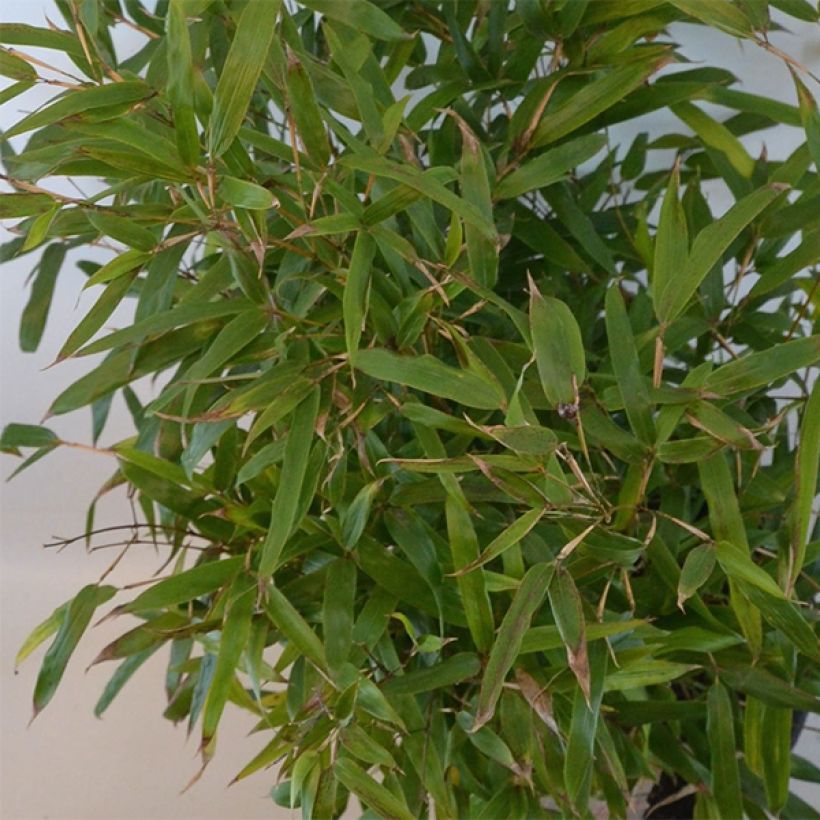

Plant habit
Foliage
Botanical data
Phyllostachys
humilis
Poaceae
China
Other Spreading Bamboo
Planting and care
Grown in containers, bamboos can be planted at any time of the year, except in case of frost. Nevertheless, the best planting period is late summer and autumn, when the soil is warm and rainfall is more frequent. The planting distance depends on how you will use your bamboos: for a mass planting, allow a spacing of 1.8 m to 2.2 m (5.9 ft to 7.2 ft) between each plant. For a hedge, reduce this distance to 1 m to 1.4 m (3.3 ft to 4.6 ft).
In general, bamboo appreciates rich, well-drained soil that remains moist, either acidic or neutral. They can tolerate slightly chalky soil.
During planting, loosen the soil and moisten the rootball by soaking it. You can add well-decomposed compost by raking into the surface. Watering should be done regularly at least during the first year in open ground, and constantly if your bamboos are grown in pots. The establishment time can sometimes seem a bit long, but don't panic!
For bamboos with running rhizomes, the installation of a rhizome barrier (thick and resistant polypropylene film) is essential because these varieties can quickly colonise large areas. The rhizome barrier should be buried vertically, with a height of 10 cm (3.9 in) left above ground, and inclined at a 15° angle towards the plant.
In terms of maintenance, bamboo is not demanding: remember to weed around the base at least in the beginning until the dead leaves, left on the ground, form a natural mulch. A nitrogen-rich fertiliser (well-decomposed manure or liquid fertiliser) in spring and autumn can be beneficial.
Planting period
Intended location
Care
-
, onOrder confirmed
Reply from on Promesse de fleurs
Evergreen shrubs
Haven't found what you were looking for?
Hardiness is the lowest winter temperature a plant can endure without suffering serious damage or even dying. However, hardiness is affected by location (a sheltered area, such as a patio), protection (winter cover) and soil type (hardiness is improved by well-drained soil).

Photo Sharing Terms & Conditions
In order to encourage gardeners to interact and share their experiences, Promesse de fleurs offers various media enabling content to be uploaded onto its Site - in particular via the ‘Photo sharing’ module.
The User agrees to refrain from:
- Posting any content that is illegal, prejudicial, insulting, racist, inciteful to hatred, revisionist, contrary to public decency, that infringes on privacy or on the privacy rights of third parties, in particular the publicity rights of persons and goods, intellectual property rights, or the right to privacy.
- Submitting content on behalf of a third party;
- Impersonate the identity of a third party and/or publish any personal information about a third party;
In general, the User undertakes to refrain from any unethical behaviour.
All Content (in particular text, comments, files, images, photos, videos, creative works, etc.), which may be subject to property or intellectual property rights, image or other private rights, shall remain the property of the User, subject to the limited rights granted by the terms of the licence granted by Promesse de fleurs as stated below. Users are at liberty to publish or not to publish such Content on the Site, notably via the ‘Photo Sharing’ facility, and accept that this Content shall be made public and freely accessible, notably on the Internet.
Users further acknowledge, undertake to have ,and guarantee that they hold all necessary rights and permissions to publish such material on the Site, in particular with regard to the legislation in force pertaining to any privacy, property, intellectual property, image, or contractual rights, or rights of any other nature. By publishing such Content on the Site, Users acknowledge accepting full liability as publishers of the Content within the meaning of the law, and grant Promesse de fleurs, free of charge, an inclusive, worldwide licence for the said Content for the entire duration of its publication, including all reproduction, representation, up/downloading, displaying, performing, transmission, and storage rights.
Users also grant permission for their name to be linked to the Content and accept that this link may not always be made available.
By engaging in posting material, Users consent to their Content becoming automatically accessible on the Internet, in particular on other sites and/or blogs and/or web pages of the Promesse de fleurs site, including in particular social pages and the Promesse de fleurs catalogue.
Users may secure the removal of entrusted content free of charge by issuing a simple request via our contact form.

































